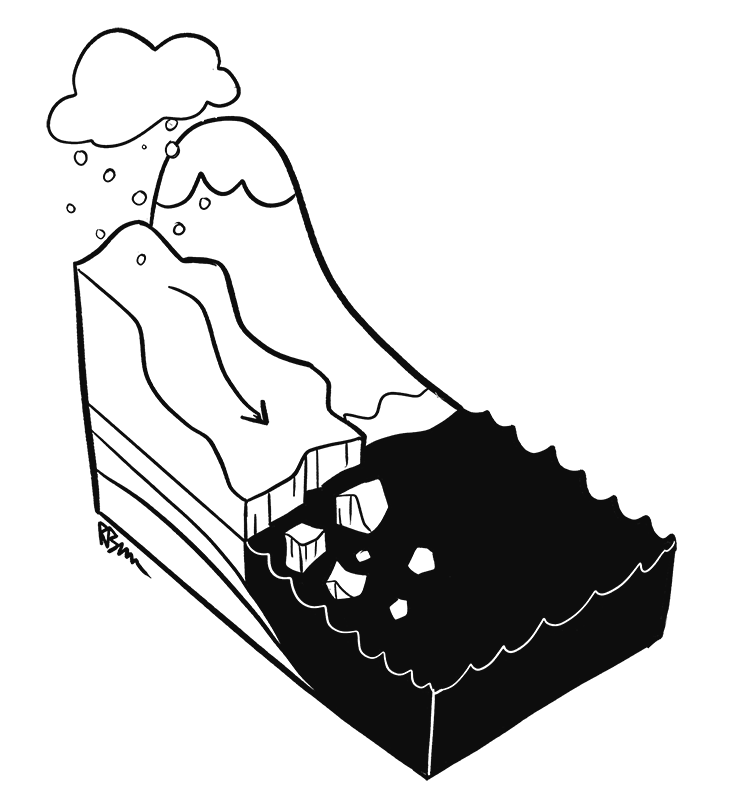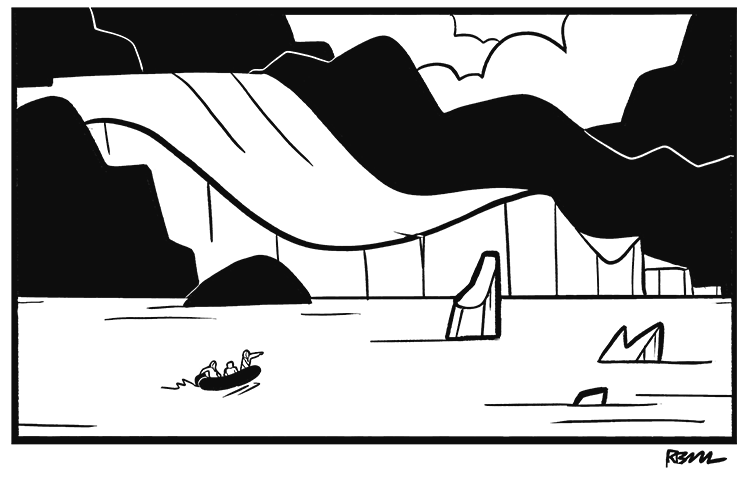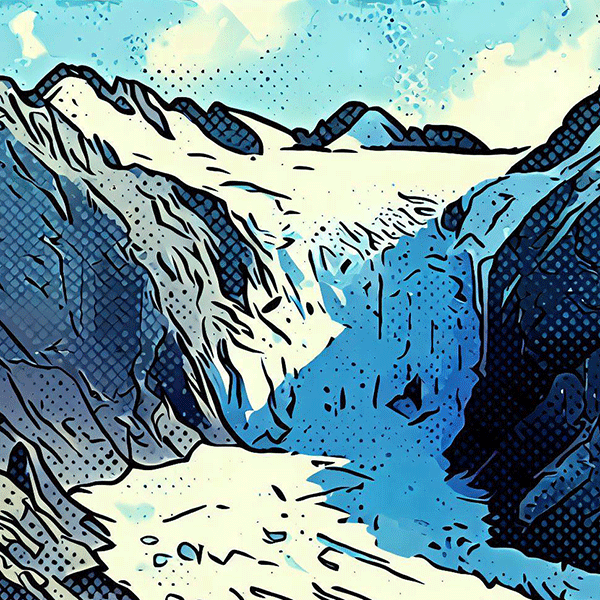What Are Glaciers?
Think of glaciers as giant ice monsters! They form in places where snow piles up faster than it can melt or disappear, and this process takes hundreds of years. You can find these icy giants on every continent except Australia, from the chilly Polar Regions to tall mountain ranges.
How a Glacier is Born
Every glacier starts as a bunch of snowflakes. As more and more snow falls, it squishes the layers below into something called firn. Firn is a dense, grainy type of ice and you can think of it as the dough that will eventually become a glacier. When even more snow falls and presses down on the firn, it hardens into the solid ice we know as a glacier.

Glaciers on the Go
Even though glaciers look super solid and still, they’re actually always moving, just really, really slowly. This movement is because of the huge weight of the glacier which makes the ice change shape and flow, kind of like slow-moving, icy lava. That’s why some people call glaciers ‘rivers of ice’.
Different Types of Glaciers
Glaciers come in all shapes and sizes. Alpine or mountain glaciers are found high up in mountain valleys. Ice sheets, also known as continental glaciers, are massive blankets of ice that cover big areas of land, like those in Greenland and Antarctica. Ice caps are like the little brothers and sisters of ice sheets, covering less than 50,000 square kilometers.

Glaciers, the Artists of Nature
Glaciers are like artists, carving out valleys and mountains as they move. When a glacier melts, it leaves behind its artwork: bowl-shaped basins called cirques, mounds of rock debris called moraines, and grooves in the rock called striations.
The Past and Future of Glaciers
Glaciers are like crystal balls that can help scientists predict changes in climate. Scientists watch their size and movement to estimate global temperatures. Sadly, because of global warming, many of these ice monsters are getting smaller, which could lead to rising sea levels and affect our freshwater supplies.
Understanding glaciers is really important. These icy giants show us the power and beauty of nature, but they’re also a crucial part of our planet’s climate. So, the next time you see a picture of a magnificent glacier, take a minute to think about its amazing journey and how important it is to our world.
